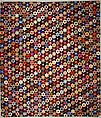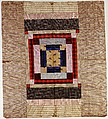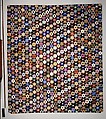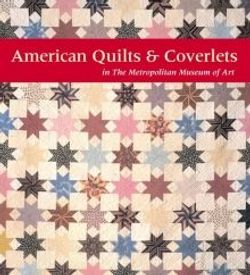Quilt, Hexagon or mosaic pattern
Anne Record American
Not on view
The donor of this silk quilt, Mrs. Frederick H. Buzzee, wrote in a letter to the Museum that it "was begun the day I was born, November 18, 1864 by Miss Anne Record of New Bedford, Massachusetts, a family friend, and designated for me. It took some years in the making, and then was given to me. . . . It has never been used, always carefully preserved, and is in perfect condition." This quilt was probably made essentially to display Anne Record's artistic skills with the needle. Although at first glance, the arrangement of colored hexagons appears random, on closer inspection, subtle diagonal bands of dark and light become apparent. Each rosette is surrounded by six black hexagons, which set the multicolored silks into sharper relief. It is unusual that the back of the quilt is also of pieced silk, in this case in a pattern of large squares and rectangles.
Hexagon bed covers made in the third quarter of the nineteenth century were called "Mosaic" quilts. They were likely to be pieced out of brilliantly colored silks, like this example. A number of overall patterns were popular. Usually, the hexagons were joined together with the running stitch rather than the more time-consuming whipstitch. Women's magazines of the period recommended displaying Mosaic patchwork in rooms decorated in the Moorish and Turkish styles that were fashionable during the 1870s and 1880s. The name "Mosaic" may also refer to the similarity in appearance of this type of quilt to the colorful tile floors that increasingly decorated many Victorian houses after the invention of encaustic tiles in the 1830s.
This image cannot be enlarged, viewed at full screen, or downloaded.
This artwork is meant to be viewed from right to left. Scroll left to view more.









